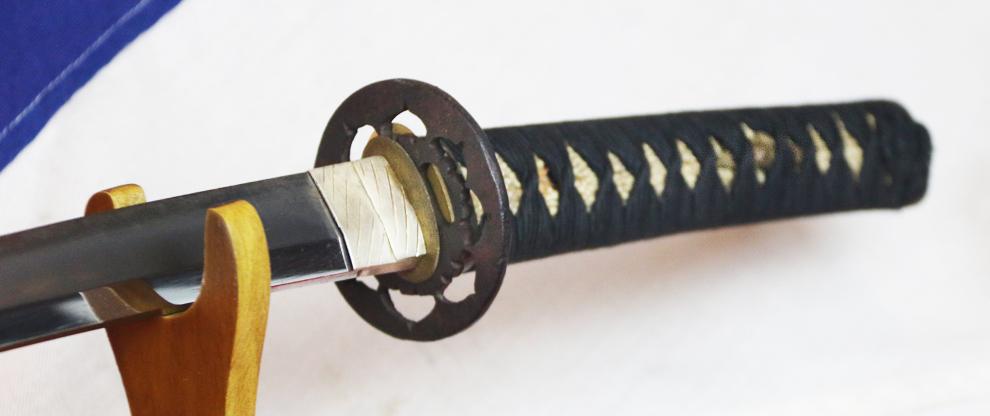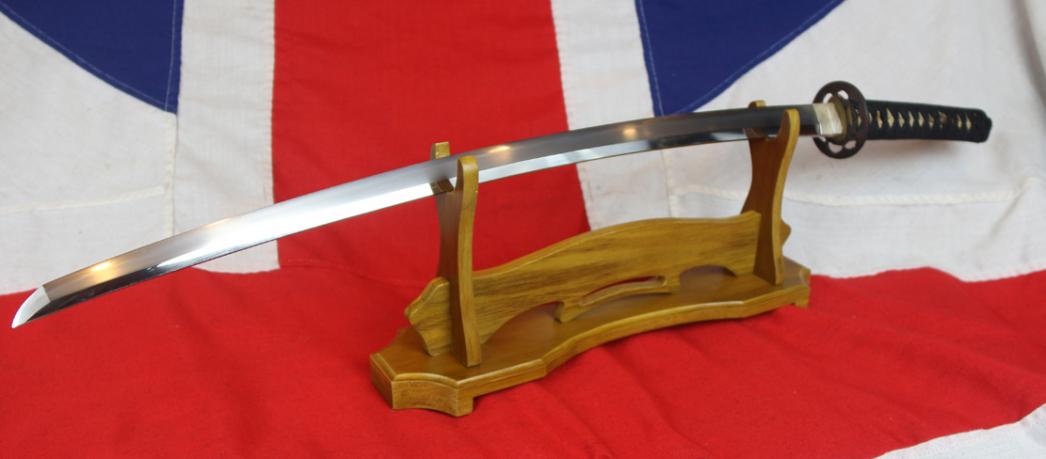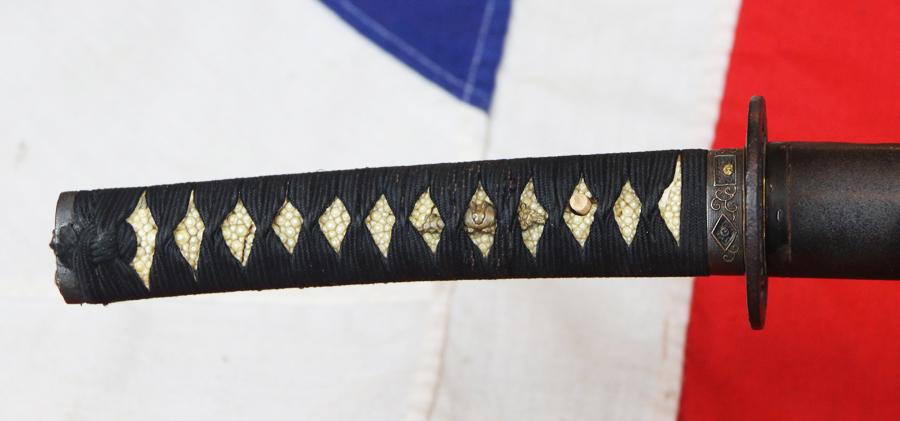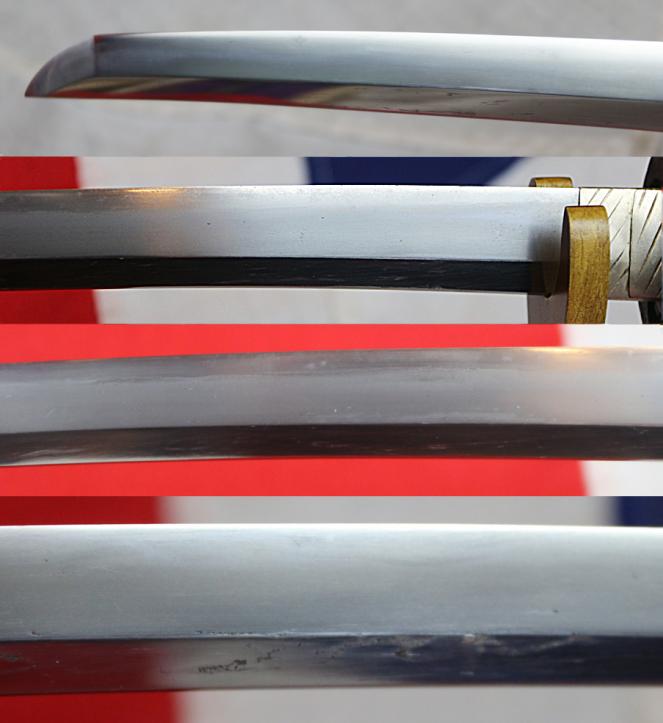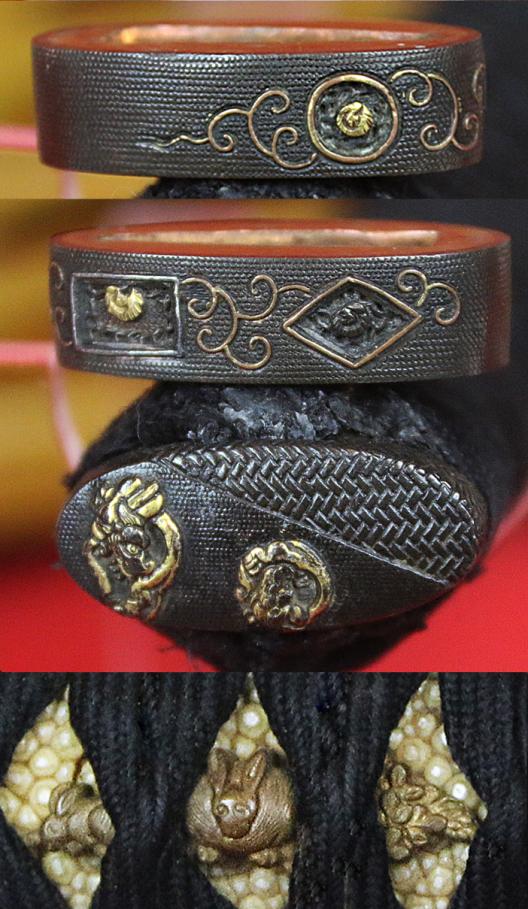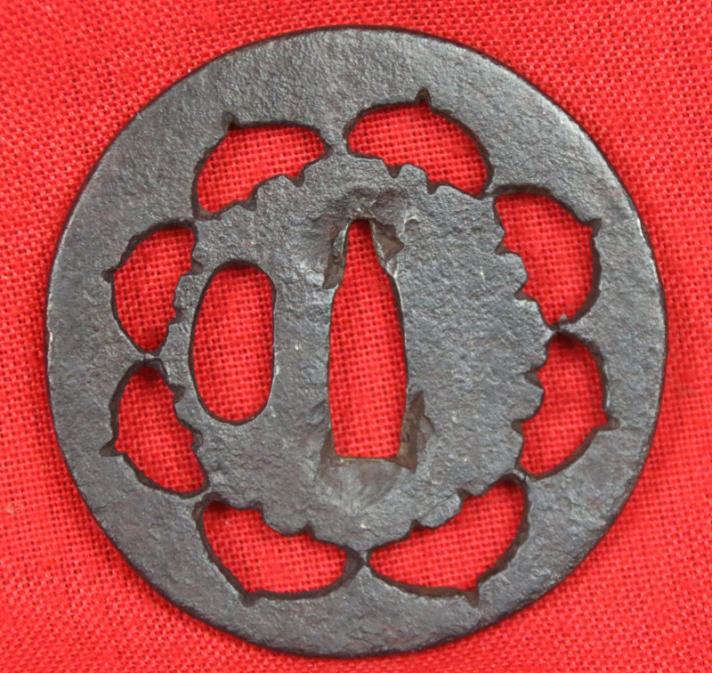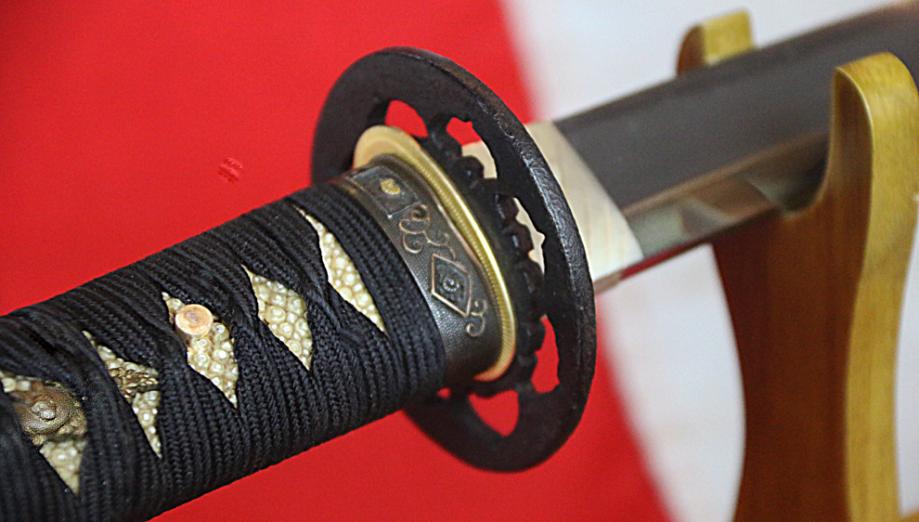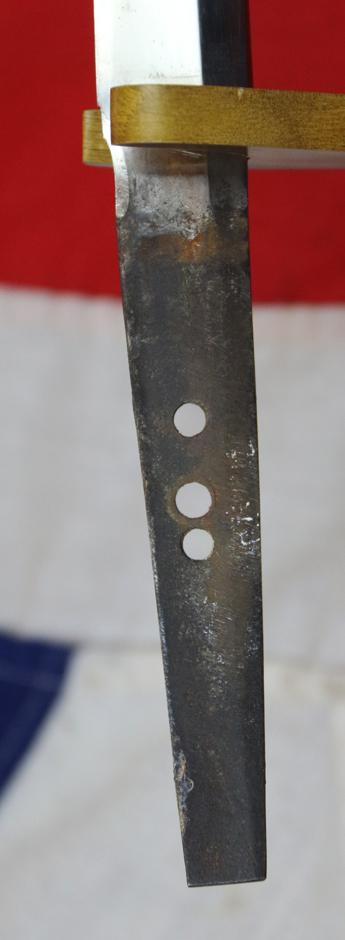A Most Beautiful Koto Era Sengoku Period Katana Circa 1480 Signed Norimitsu , All Original Edo Period Mountings
In super condition for its great age, with all it's original Edo period mounts and saya.
Shakudo and pure gold decorated fuchi kashira decorated with takebori shishi mythical lion dogs with a gold dragon entwined around its neck on a nanako and rattan pattern crosshatching. The kashira has geometric patterns and copper curlicues. The tsuka is wrapped in black silk binding over golden sinchu rabbits with flowers. The tsuba is a superb geometrically pierced sukashi, a Koto period piece, on a circular iron plate. The blade is signed Norimitsu but not unusually the signature region is faded through age so it is difficult to read although highligted in white powder on the tang. The blade has a very good and clear hamon, and a very elegant funbari graduating curvature and it has been polished several times over 500 years so it shows a little completely understandable light surface thinning to one small area see blade photos.
It has a silvered engraved habaki blade collar.
Original black Edo period ishime black stone lacquer around 200 years old to the saya and in very nice condition, slight wear marks but super overall.
The Sengoku period Sengoku Jidai, "Warring States period") is a period in Japanese history of near-constant civil war, social upheaval, and intrigue from 1467 to 1615.
The Sengoku period was initiated by the Ōnin War in 1467 which collapsed the feudal system of Japan under the Ashikaga Shogunate. Various samurai warlords and clans fought for control over Japan in the power vacuum, while the Ikkō-ikki emerged to fight against samurai rule. The arrival of Europeans in 1543 introduced the arquebus into Japanese warfare, and Japan ended its status as a tributary state of China in 1549. Oda Nobunaga dissolved the Ashikaga Shogunate in 1573 and launched a war of political unification by force, including the Ishiyama Hongan-ji War, until his death in the Honnō-ji Incident in 1582. Nobunaga's successor Toyotomi Hideyoshi completed his campaign to unify Japan and consolidated his rule with numerous influential reforms. Hideyoshi launched the Japanese invasions of Korea in 1592, but their eventual failure damaged his prestige before his death in 1598. Tokugawa Ieyasu displaced Hideyoshi's young son and successor Toyotomi Hideyori at the Battle of Sekigahara in 1600 and re-established the feudal system under the Tokugawa Shogunate. The Sengoku period ended when Toyotomi loyalists were defeated at the siege of Osaka in 1615.
The Sengoku period was named by Japanese historians after the similar but otherwise unrelated Warring States period of China. Overall 35.25 inches long, blade 25.5 inches long
Code: 23948



